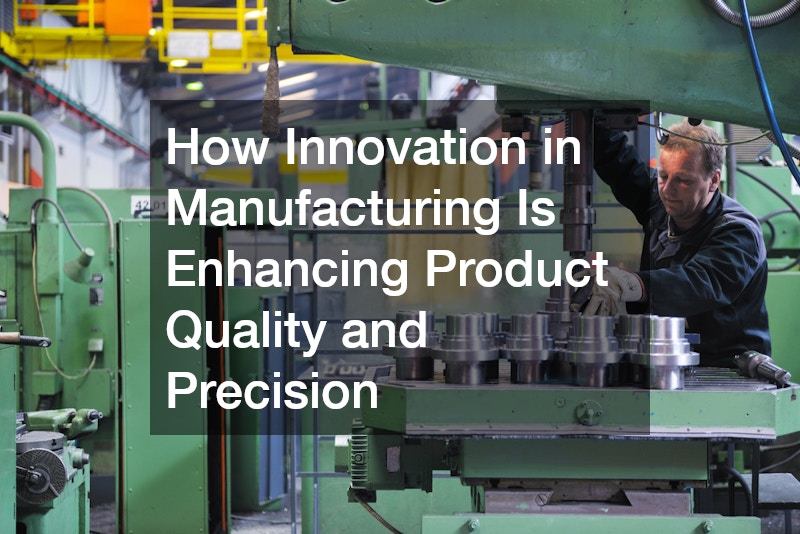Innovation in manufacturing has become a pivotal component for industries striving to improve product quality and operational efficiency. With technological advancements transforming traditional manufacturing processes, businesses across various sectors are witnessing a substantial enhancement in their capabilities. This article delves into how innovation in manufacturing is influencing different fields, from construction to consumer goods, providing detailed insights into the trends and technologies driving these changes.
The Role of Precision Machining in Enhancing Product Quality for Custom Builders
Custom home builders are leveraging precision machining to significantly enhance the quality of their constructions. Through the integration of advanced machinery, builders can ensure that each component is produced to exact specifications, reducing the margin for error. This precision is vital in projects where bespoke design and unique features are the norm, allowing custom home builders to deliver superior homes tailored to client desires.
Incorporating innovation in manufacturing not only elevates the quality of build but also optimizes the use of materials. With precise cuts and fewer errors, the waste production is minimized, contributing to a more sustainable building process. This approach not only meets environmental standards but also ensures economic efficiency, both of which are increasingly demanded by clients.
The result of implementing these advanced methods is a higher level of trust and satisfaction among clients, who receive a final product that embodies the pinnacle of modern construction techniques. Builders are able to maintain a strong reputation and competitiveness in the market by delivering faultless products. Thus, precision machining is indispensable for custom home builders aiming to enhance product quality.
How Advanced EDM Machining Is Improving Precision in Manufacturing Processes
EDM machining, or Electrical Discharge Machining, is revolutionizing precision manufacturing by allowing manufacturers to achieve unparalleled accuracy in their work. This process involves using electrical discharges to shape materials, especially metals, with a high degree of detail. It is especially useful for complex geometries that are difficult to produce with conventional methods.
The adoption of EDM machining has ushered in a new era of innovation in manufacturing, where complex parts can be produced with exceptional accuracy. This precision is crucial for industries such as aerospace and medical devices, where even slight deviations from design specifications can lead to significant operational failures. EDM offers the flexibility and precision required to meet the stringent standards of these sectors.
Furthermore, EDM machining enhances efficiency by reducing production times and minimizing material waste. This leads to cost savings and greater profitability for manufacturing companies. By adopting this advanced technology, companies are able to stay competitive and meet the ever-evolving demands of the market.
Leveraging Innovation in Manufacturing for Superior Quality in Preformed Plastic Designs
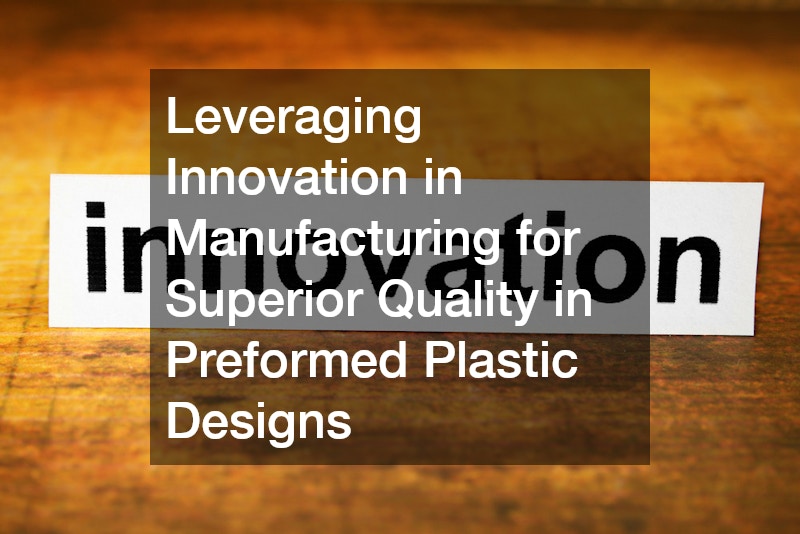
For plastic preform designers, innovation in manufacturing is key to producing high-quality products that meet rigorous industry standards. Advanced techniques such as injection molding and 3D printing have revolutionized the design and production of plastic components, ensuring consistent quality and improved functionality. These methods allow for the precise control of the production process, resulting in better product quality and reduced production time.
Incorporating these innovative technologies into the manufacturing process enables designers to create complex shapes and structures that were previously impossible. This opens up new possibilities for product design and functionality, significantly enhancing the competitiveness of plastic preform designers. Additionally, these advancements contribute to sustainable manufacturing practices by minimizing waste and energy consumption.
The ability to produce high-quality plastic designs is especially important in industries such as packaging, automotive, and consumer goods, where durability and aesthetic appeal are crucial. By leveraging innovation in manufacturing, plastic preform designers can meet these demands and exceed customer expectations, thereby strengthening their market position and enhancing brand loyalty.
Custom Home Builders: How Manufacturing Innovation Drives High-Quality Construction
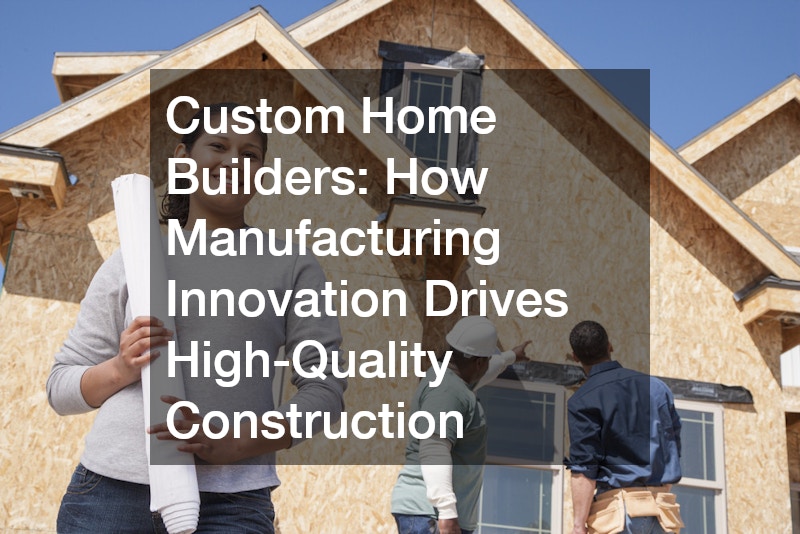
Innovation in manufacturing processes has enabled custom home builders to elevate the quality and efficiency of their construction projects. Techniques like modular construction and prefabrication allow builders to assemble house components in controlled environments, ensuring precision and consistency. These advances facilitate faster build times and reduced on-site labor costs, allowing custom home builders to deliver high-quality homes in less time.
Additionally, the use of cutting-edge materials and technologies, such as 3D printing and advanced composites, enhances structural integrity and design flexibility. Builders are able to create unique designs that cater to the specific needs and preferences of their clients, providing a truly customizable building experience. By adopting these innovations, they can also address environmental concerns through the use of sustainable and energy-efficient materials.
As innovation in manufacturing continues to evolve, custom home builders who embrace these changes will remain at the forefront of industry trends. By delivering superior construction quality and personalized experiences, these builders can maintain a competitive edge and secure their position in the market. This approach not only benefits clients but also enhances the reputation and profitability of the builders themselves.
Enhancing Durability: How Concrete Materials Are Benefiting from Modern Manufacturing Innovation
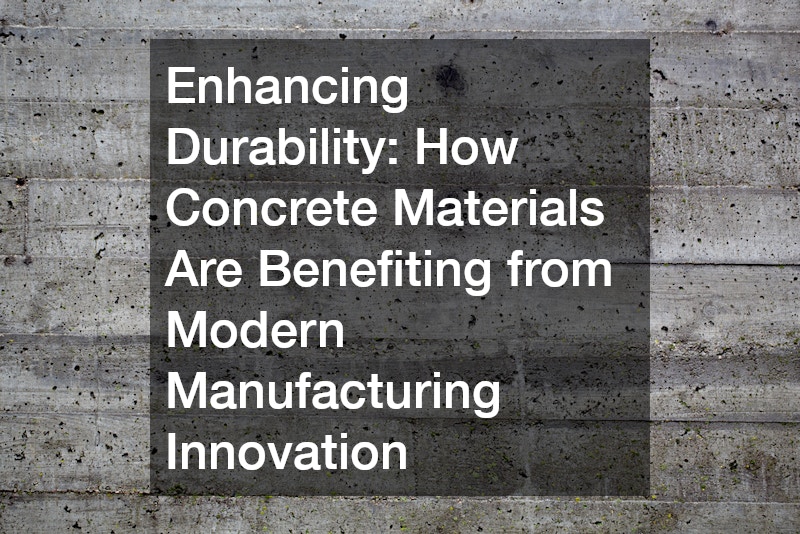
Concrete materials, a staple in construction, have seen significant improvements due to innovation in manufacturing. Modern techniques such as self-healing concrete and high-performance concrete mixes are pushing the boundaries of what concrete can achieve. These advancements enhance durability, reduce maintenance costs, and extend the lifespan of structures.
The introduction of additives and advanced mixing methods has led to concrete that can self-repair when micro-cracks occur, minimizing structural damage over time. This innovation is particularly beneficial for infrastructures like bridges and highways that require long-term durability. By reducing the need for frequent repairs, governments and private builders can save considerable resources over the years.
Furthermore, innovation in manufacturing has resulted in concrete that performs well under extreme conditions, supporting new architectural possibilities. Builders can now construct more resilient structures that stand the test of time, providing greater peace of mind for end-users. This ensures that concrete remains a trusted and essential material in the construction industry.
Warehouse Storage Solutions: Innovation in Manufacturing for Improved Organization and Efficiency
The realm of warehouse storage has significantly benefitted from innovation in manufacturing, introducing solutions that enhance organization and productivity. Automated storage and retrieval systems (AS/RS) provide warehouse operators the ability to manage inventory with precision and speed. This technology reduces human error, resulting in more reliable inventory control.
Moreover, the development of customizable and scalable shelving solutions enables warehouses to adapt to ever-changing storage needs. These innovations allow businesses to maximize their storage capacity while maintaining an efficient workflow. By optimizing space and streamlining operations, companies can achieve greater efficiency and profitability in their supply chain management.
Incorporating innovative manufacturing techniques also supports environmentally sustainable practices, such as energy-saving lighting and recycled materials. By implementing these innovations, businesses can not only increase efficiency but also reduce their environmental footprint. This dual benefit affirms the value of integrating cutting-edge solutions within warehouse operations.
The Impact of Technology on Glass Railing Installations: Boosting Precision and Quality
In glass railing installations, technology plays a crucial role in enhancing precision and quality. Advancements like laser measuring tools and CAD software design have transformed how manufacturers and installers approach projects. These tools ensure accurate measurements and precise cutting, resulting in seamless installations.
Furthermore, innovation in manufacturing materials, such as tempered and laminated glass, has increased the safety and durability of these installations. This adds an essential layer of protection for users without compromising aesthetic appeal. Modern glass railing systems are stronger and more resilient, addressing both functional and safety concerns.
This technological integration leads to higher customer satisfaction, as installations are completed efficiently with minimal discrepancies. Builders and designers leveraging these advancements can offer innovative solutions that meet contemporary design and safety standards. This positions glass railing installers at the cutting edge of architectural design, ensuring long-term success in the industry.
Manufactured Home Builders: How Innovation in Manufacturing Transforms Home Construction
Manufactured home builders are at the forefront of integrating innovation in manufacturing into housing solutions. The use of advanced techniques like robotics and automated production lines allows for precise and efficient construction of home modules. As a result, manufactured homes are produced faster and at a reduced cost while maintaining high-quality standards.
These innovations have reshaped what consumers can expect from manufactured homes, often competing with traditional site-built homes in terms of quality and design. Manufactured home builders are able to offer a variety of customizable options that suit different tastes and preferences. This flexibility enhances consumer appeal and broadens the market for manufactured housing.
The impact of these manufacturing advancements extends beyond quality and cost efficiency; it also addresses environmental concerns. By adopting sustainable materials and processes, manufactured home builders contribute to eco-friendly housing solutions. This aligns with the growing demand for sustainable living options and positions these builders as leaders in the housing industry.
How Local Sign Manufacturers Are Using Innovative Techniques to Improve Product Quality
Local sign manufacturers have embraced innovation in manufacturing to enhance the quality and diversity of their products. By utilizing digital printing and laser cutting technologies, sign makers can produce intricate designs that meet the specific needs of their clients. This precision results in high-quality visual communications that effectively capture the attention of audiences.
Moreover, the incorporation of durable materials such as UV-resistant inks and weather-resistant substrates ensures signs can withstand harsh environmental conditions. This durability extends the life of signage products, providing added value to customers. As a result, local sign manufacturers can offer reliable and long-lasting solutions tailored to various industries.
Innovation in manufacturing also allows for faster production times and more efficient processes, enabling manufacturers to meet tight deadlines without compromising on quality. By staying abreast of technological advances, local sign manufacturers can maintain their competitiveness and continue to deliver exceptional products to their clientele. This continuous improvement drives customer satisfaction and strengthens business relationships.
Shed Building Services: Innovation in Materials and Techniques for More Durable Structures
Shed building services have evolved with the advent of innovation in manufacturing, introducing materials and methods that enhance the durability of structures. Advanced composite materials and pre-engineered components ensure that sheds are more resilient to environmental stresses such as wind, rain, and snow. This enhances their lifespan and reduces the need for regular maintenance.
Innovative manufacturing processes also facilitate faster assembly and customization options, allowing customers to tailor sheds to their specific needs without compromising on quality. Techniques like modular assembly and prefabrication contribute to efficient construction, enabling builders to meet customer demands swiftly and effectively. This flexibility is a key driver of customer satisfaction and business success in the shed building industry.
The integration of sustainable materials and energy-efficient designs further adds value for environmentally conscious consumers. By adopting these eco-friendly practices, shed building services align with global sustainability goals and appeal to a growing segment of the market. This strategic approach positions businesses for long-term growth and competitiveness in an evolving marketplace.
How HVAC System Experts Are Leveraging Manufacturing Innovations for Better Performance
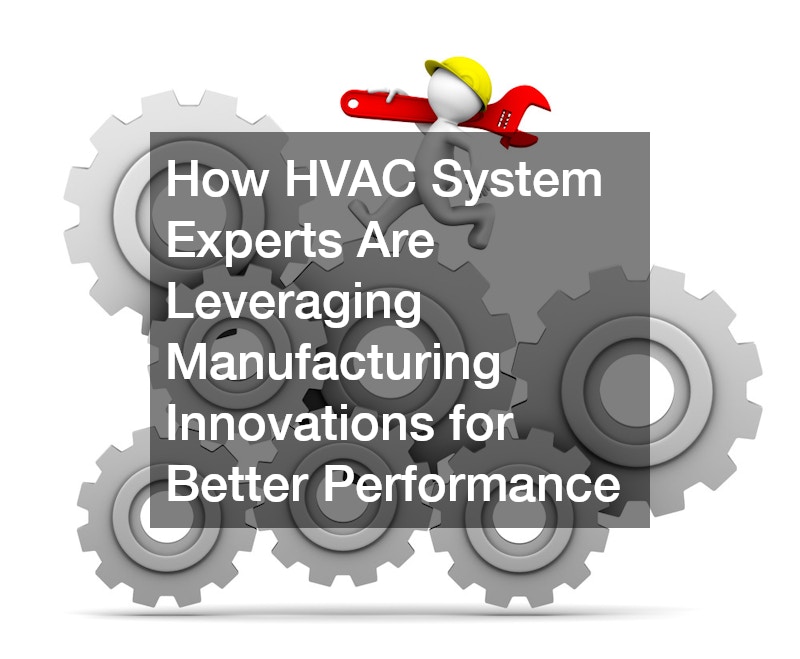
HVAC system experts are increasingly turning to innovation in manufacturing to enhance the performance and efficiency of their solutions. Advancements such as smart thermostats and energy-efficient components enable HVAC systems to operate optimally while reducing energy consumption. These innovations provide cost savings for consumers and contribute to environmental sustainability.
The integration of IoT technologies allows for remote monitoring and control of HVAC systems, providing users with greater convenience and comfort. This connectivity also enables experts to offer predictive maintenance services, identifying issues before they become significant problems. This proactive approach reduces downtime and extends the lifespan of HVAC equipment.
By staying at the forefront of technological innovations, HVAC system experts can offer state-of-the-art solutions that meet modern comfort demands and energy efficiency standards. This enhances their value proposition and helps them maintain a competitive edge in the market. The continual advancement of manufacturing innovations ensures that HVAC experts can address evolving consumer needs effectively.
The Importance of Design and Manufacturing Innovation in Producing High-Quality Custom Products
Design and manufacturing innovation are pivotal in creating high-quality custom products that meet the unique demands of consumers. By applying cutting-edge technologies and creative design processes, manufacturers can produce bespoke items with precision and efficiency. This capability allows businesses to cater to niche markets and develop diverse product lines.
Innovations such as 3D printing and CAD modeling enable designers to visualize and test concepts before final production, ensuring optimal product performance. These tools enhance the ability to customize and iterate on designs, leading to improved product development cycles. As a result, manufacturers can reduce time to market while maintaining high standards of quality.
This approach not only meets consumer expectations for personalized products but also fosters brand loyalty and differentiation in competitive markets. By embracing innovation in manufacturing, businesses can continuously evolve alongside consumer trends and technological advancements. This commitment to innovation solidifies their position as industry leaders.
Innovation in manufacturing continues to be a catalyst for change across numerous industries, from custom home building to warehouse storage solutions. By embracing advanced technologies and processes, businesses can enhance their product quality, operational efficiency, and environmental sustainability. This article has explored how various industries are benefiting from these innovations, underscoring the importance of continuous improvement and adaptation.
The integration of cutting-edge manufacturing methods not only meets current consumer demands but also paves the way for future advancements. As industries continue to evolve alongside technological progress, the possibilities for innovation in manufacturing are limitless. Businesses that remain committed to innovation are well-positioned to thrive in the modern market landscape.
Through these concerted efforts, the potential for innovation in manufacturing to transform industries is immense. By staying ahead of the curve and leveraging new technologies, companies can achieve new levels of success and remain at the forefront of their respective fields. As we move forward, the role of innovation in manufacturing will undoubtedly shape the future of global industries.
